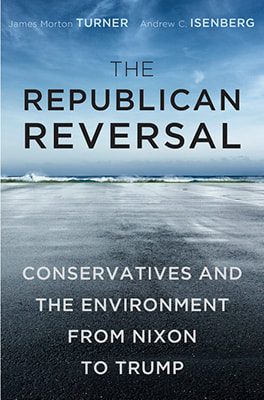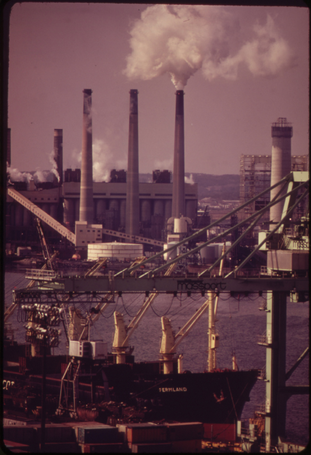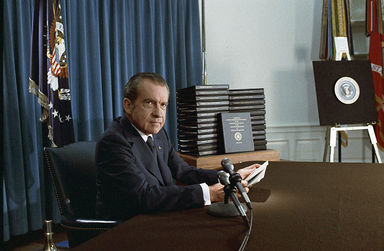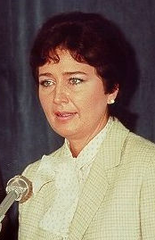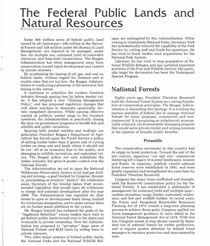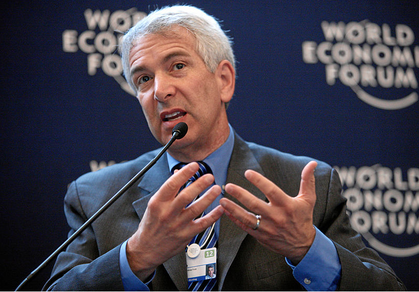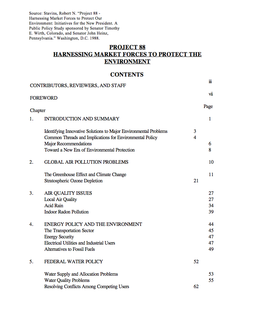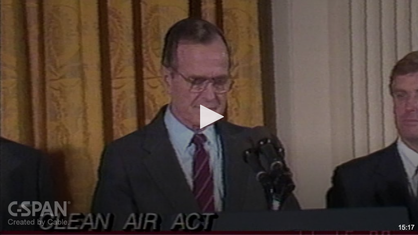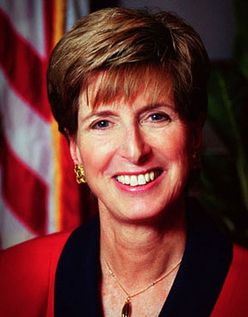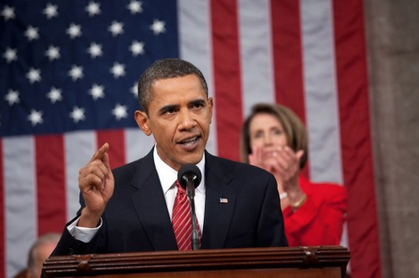CHAPTER THREE:
The Cost of Clean Air and Water
|
Primary Sources
1970
|
|
“...A GOAL OF CLEAN AIR, CLEAN WATER, AND OPEN SPACES FOR THE FUTURE GENERATIONS OF AMERICA” - NIXON 1972
1981
1982
“THE OSCEOLA NATIONAL FOREST IN FLORIDA IS A VICTIM OF THE REAGAN’S ADMINISTRATION’S POLICY TO SACRIFICE MULTIPLE USES OF THE PUBLIC FORESTS TO RESOURCE EXTRACTION” 1986
1988
1990
2003
“CLEAR SKIES WOULD MAKE GREAT STRIDES TOWARDS SOLVING OUR REMAINING AIR QUALITY PROBLEMS IN A WAY THAT ALSO ADVANCES NATIONAL ENERGY SECURITY AND PROMOTES ECONOMIC GROWTH” 2015
2017
|
|
Discussion Questions
- On the campaign trail, Ronald Reagan promised relief from burdensome environmental regulations, such as the Clean Air Act and Clean Water Act. To what extent did his administration deliver on that promise? What were the lasting consequences of those efforts? How did environmental groups mobilize in opposition?
- Why was a “command-and-control” approach to environmental policy important to the success of laws such as the Clean Air Act and Clean Water Act? Why did conservatives come to oppose that approach?
- How did the Chevron doctrine strengthen the role of federal agencies, such as the Environmental Protection Agency, in implementing regulatory policy?
- Why was enacting regulations to curb acid rain more challenging than passing the Clean Air Act of 1970? Why did a market-based “cap and trade” strategy succeed in breaking the political logjam? Did that strategy work as expected?
- Why didn’t a cap-and-trade approach to reforming the Clean Air Act succeed under George W. Bush, when that approach had been so important to George H. W. Bush’s environmental legacy?
- What role have moderate Republicans had in protecting the Clean Water Act? How has that differed from the Trump administration’s approach to the Clean Water Act?
- Why has it been more challenging to regulate point-source versus non-point source water pollution under the Clean Water Act? How have questions about what constitutes “navigable waters” complicated those efforts?
- If the Clean Air Act and Clean Water Act have improved environmental quality since the 1970’s, why have issues of environmental justice become more acute?
Additional Readings
Clean Air Act
“The SO2 Allowance Trading System and the Clean Air Act Amendments of 1990: Reflection on Twenty Years of Policy Innovation”
Gabriel Chan, Robert N. Stavins, Robert C. Stowe, and Richard Sweeney | Cambridge, Massachusetts, USA: Harvard Environmental Economics Program, 2012
”Downwind Ozone: Clearing the Air”
Theodore L. Garrett | Natural Resources & Environment, 2004
“Policy Watch: Economics and the Clean Air Act”
Paul R. Portney | Journal of Economic Perspectives, 1990
“What Can We Learn from the Grand Policy Experiment? Lessons from SO2 Allowance Trading”
Robert N. Stavins | Journal of Economic Perspectives, September 1998
Gabriel Chan, Robert N. Stavins, Robert C. Stowe, and Richard Sweeney | Cambridge, Massachusetts, USA: Harvard Environmental Economics Program, 2012
”Downwind Ozone: Clearing the Air”
Theodore L. Garrett | Natural Resources & Environment, 2004
“Policy Watch: Economics and the Clean Air Act”
Paul R. Portney | Journal of Economic Perspectives, 1990
“What Can We Learn from the Grand Policy Experiment? Lessons from SO2 Allowance Trading”
Robert N. Stavins | Journal of Economic Perspectives, September 1998
Clean Water Act
“When Will Governments Regulate Nonpoint Source Pollution?”
Robert K. Craig and Anna M. Roberts | Boston College Environmental Affairs, 2015
“Consequences of the Clean Water Act and the Demand for Water Quality”
David A. Keiser and Joseph S. Shapiro| Yale University (working paper), January 2017, accessed 1 November 2017
President Clinton’s Clean Water Initiative
U.S. Environmental Protection Agency | National Service Center for Environmental Publications, February 1994
Robert K. Craig and Anna M. Roberts | Boston College Environmental Affairs, 2015
“Consequences of the Clean Water Act and the Demand for Water Quality”
David A. Keiser and Joseph S. Shapiro| Yale University (working paper), January 2017, accessed 1 November 2017
President Clinton’s Clean Water Initiative
U.S. Environmental Protection Agency | National Service Center for Environmental Publications, February 1994
Benefits of Environmental Regulations
”A Fresh Look at the Benefits and Costs of the US Acid Rain Program”
Lauraine G. Chestnut and David M. Mills | Journal of Environmental Management, November 2005
”Waterways Restored: Clean Water Act’s Impact on 15 American Rivers, Lakes and Bays”
Jeff Inglis et al. | Environment America Research and Policy Center, October 2014
”Consequences of the Clean Water Act and the Demand for Water Quality”
David A. Keiser and Joseph S. Shapiro| Yale University (working paper), January 2017, accessed 1 November 2017
The Benefits and Costs of the Clean Air Act from 1990 to 2020: Summary Report
U.S. Environmental Protection Agency | April 2011
Lauraine G. Chestnut and David M. Mills | Journal of Environmental Management, November 2005
”Waterways Restored: Clean Water Act’s Impact on 15 American Rivers, Lakes and Bays”
Jeff Inglis et al. | Environment America Research and Policy Center, October 2014
”Consequences of the Clean Water Act and the Demand for Water Quality”
David A. Keiser and Joseph S. Shapiro| Yale University (working paper), January 2017, accessed 1 November 2017
The Benefits and Costs of the Clean Air Act from 1990 to 2020: Summary Report
U.S. Environmental Protection Agency | April 2011
Environmental Justice
Dumping in Dixie Race, Class, and Environmental Quality
Robert Bullard | New York, NY: Routledge, 2018
“Toxic Wastes and Race at Twenty”
Robert D. Bullard, Paul Mohai, Robin Saha | Natural Resource Defense Council, March 2007
“A Look at Environmental Justice in the United States Today”
Bill Chameides | Huffington Post, 20 January 2014
EDGI Highlights Environmental Justice Implications in Part 2 of the First 100 Days and Counting
EDGI | 18 September 2017
Environmental Inequalities: Class, Race, and Industrial Pollution in Gary, Indiana, 1945-1980
Andrew Hurley | Chapel Hill, NC: The University of North Carolina Press, 1995
Toxic Communities: Environmental Racism, Industrial Pollution, and Residential Mobility
Dorceta Taylor | New York, NY: New York University Press, 2014
Robert Bullard | New York, NY: Routledge, 2018
“Toxic Wastes and Race at Twenty”
Robert D. Bullard, Paul Mohai, Robin Saha | Natural Resource Defense Council, March 2007
“A Look at Environmental Justice in the United States Today”
Bill Chameides | Huffington Post, 20 January 2014
EDGI Highlights Environmental Justice Implications in Part 2 of the First 100 Days and Counting
EDGI | 18 September 2017
Environmental Inequalities: Class, Race, and Industrial Pollution in Gary, Indiana, 1945-1980
Andrew Hurley | Chapel Hill, NC: The University of North Carolina Press, 1995
Toxic Communities: Environmental Racism, Industrial Pollution, and Residential Mobility
Dorceta Taylor | New York, NY: New York University Press, 2014
Other
“Reforming Environmental Law: The Democratic Case for Market Incentives”
Bruce A. Ackerman and Richard B. Stewart | Columbia Journal of Environmental Law, 1988
“Chevron Matters: How the Chevron Doctrine Redefined the Roles of Congress, Courts and Agencies in Environmental Law”
Donald E. Elliott | Villanova Environmental Law Journal, 2005
“Tall Stacks versus Scrubbers: $3.5-Million Publicity Campaign Fails to Discredit Emission Reduction Technology”
Environmental Law Reporter | Environmental Law Reporter, January 1975
American Environmental Policy: Beyond Gridlock
Christopher M. Klyza and David J. Sousa | Cambridge, MA: MIT Press, 2013
The Environmental Case: Translating Values Into Policy
Judith Layzer | Washington, D.C.: CQ Press, 2012
Bruce A. Ackerman and Richard B. Stewart | Columbia Journal of Environmental Law, 1988
“Chevron Matters: How the Chevron Doctrine Redefined the Roles of Congress, Courts and Agencies in Environmental Law”
Donald E. Elliott | Villanova Environmental Law Journal, 2005
“Tall Stacks versus Scrubbers: $3.5-Million Publicity Campaign Fails to Discredit Emission Reduction Technology”
Environmental Law Reporter | Environmental Law Reporter, January 1975
American Environmental Policy: Beyond Gridlock
Christopher M. Klyza and David J. Sousa | Cambridge, MA: MIT Press, 2013
The Environmental Case: Translating Values Into Policy
Judith Layzer | Washington, D.C.: CQ Press, 2012

